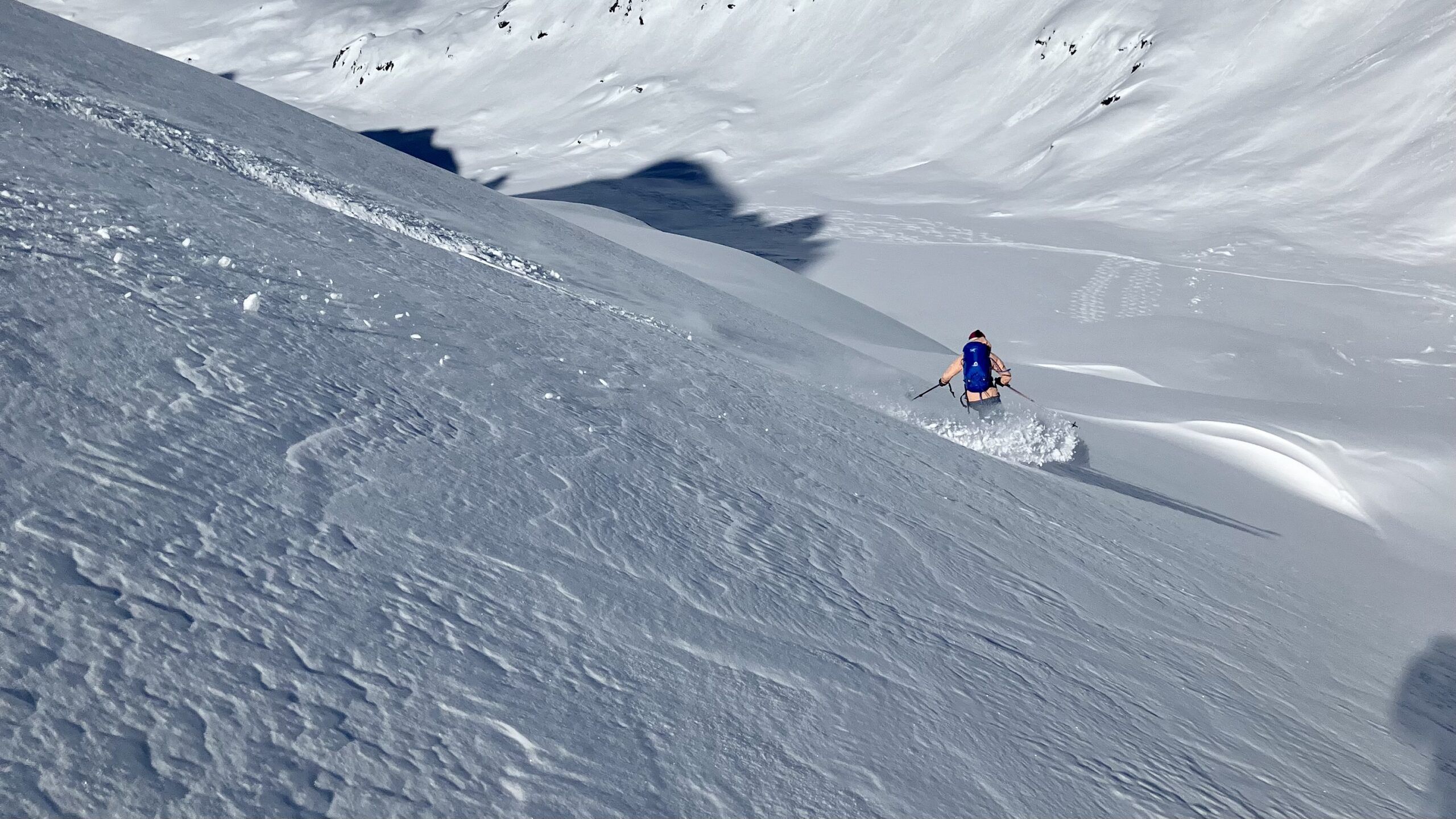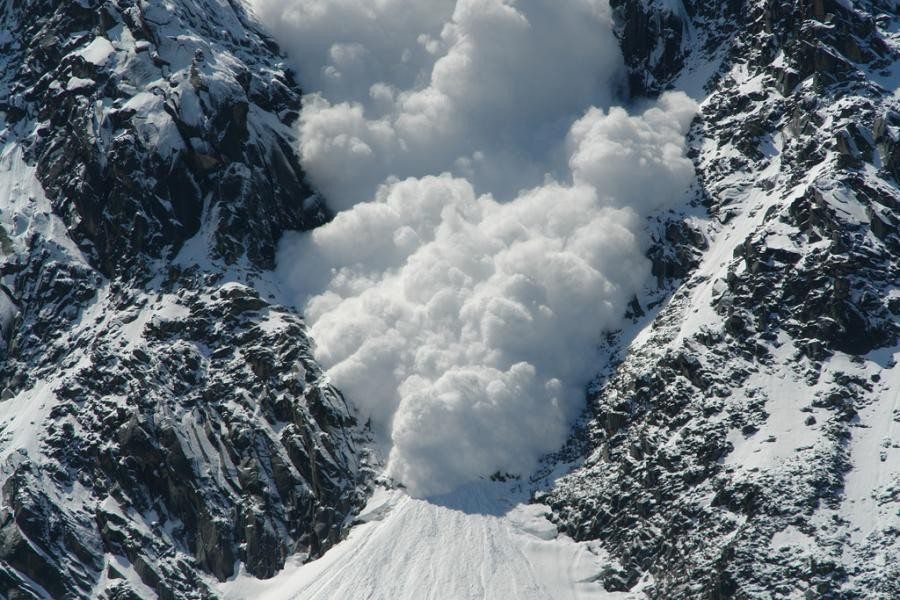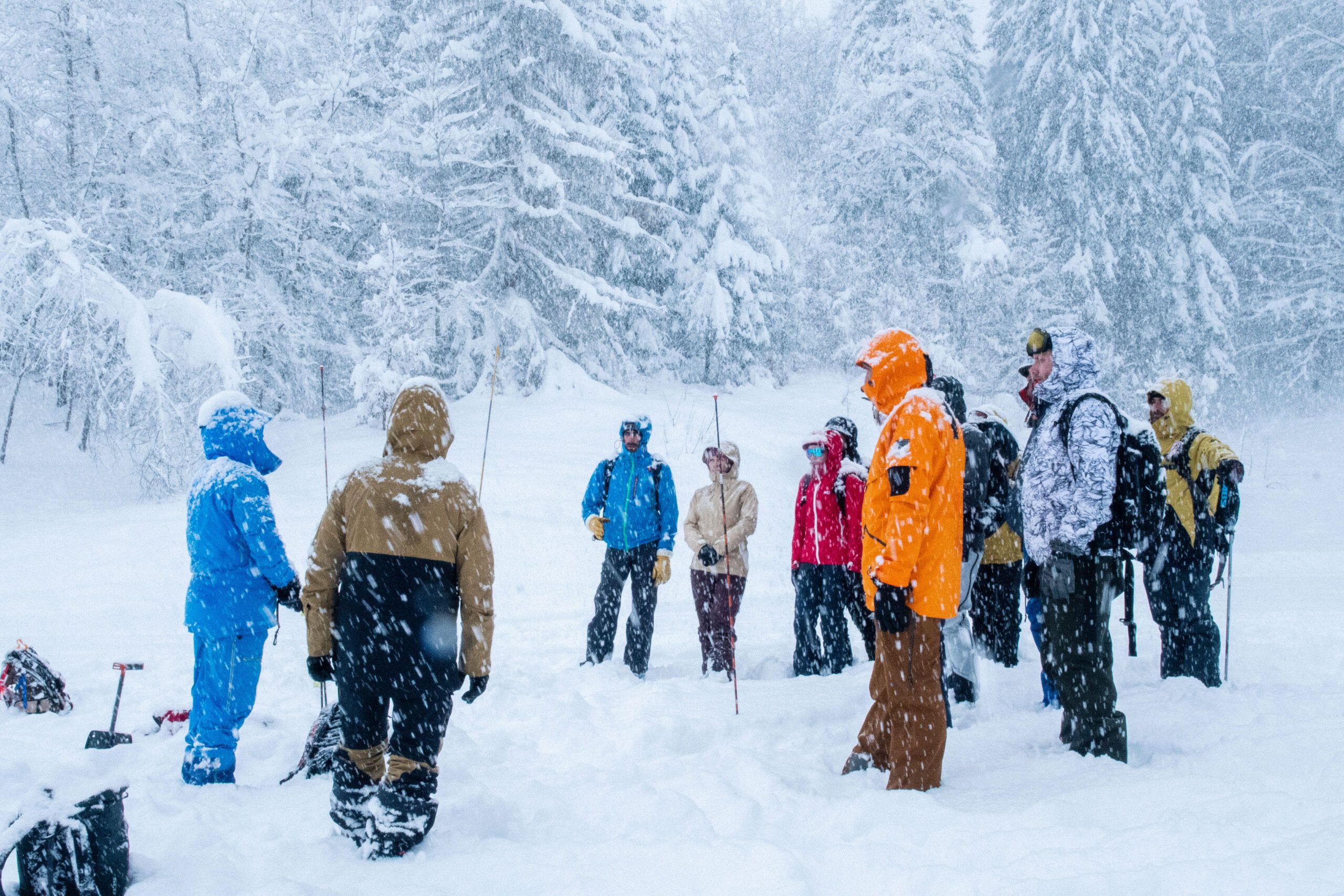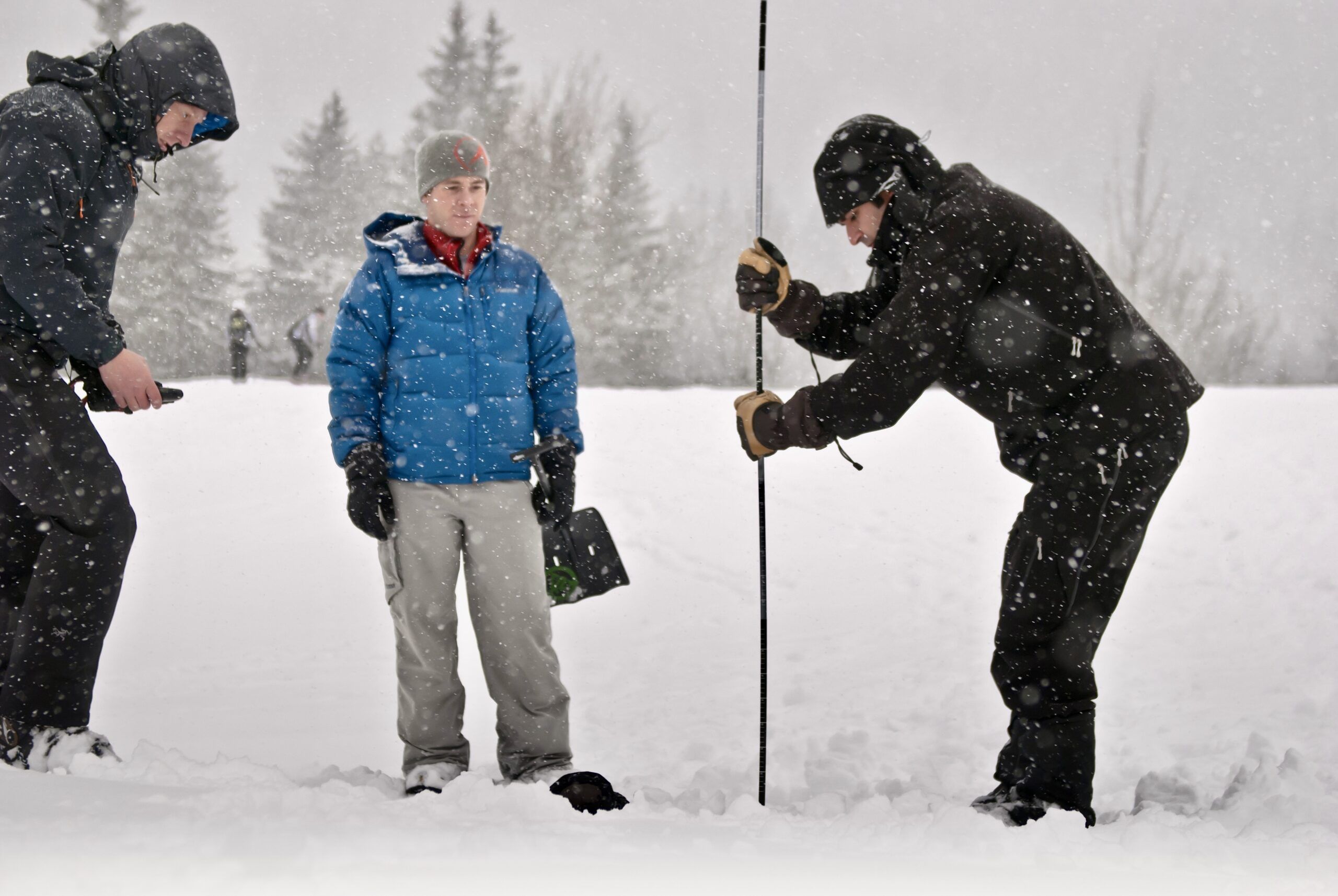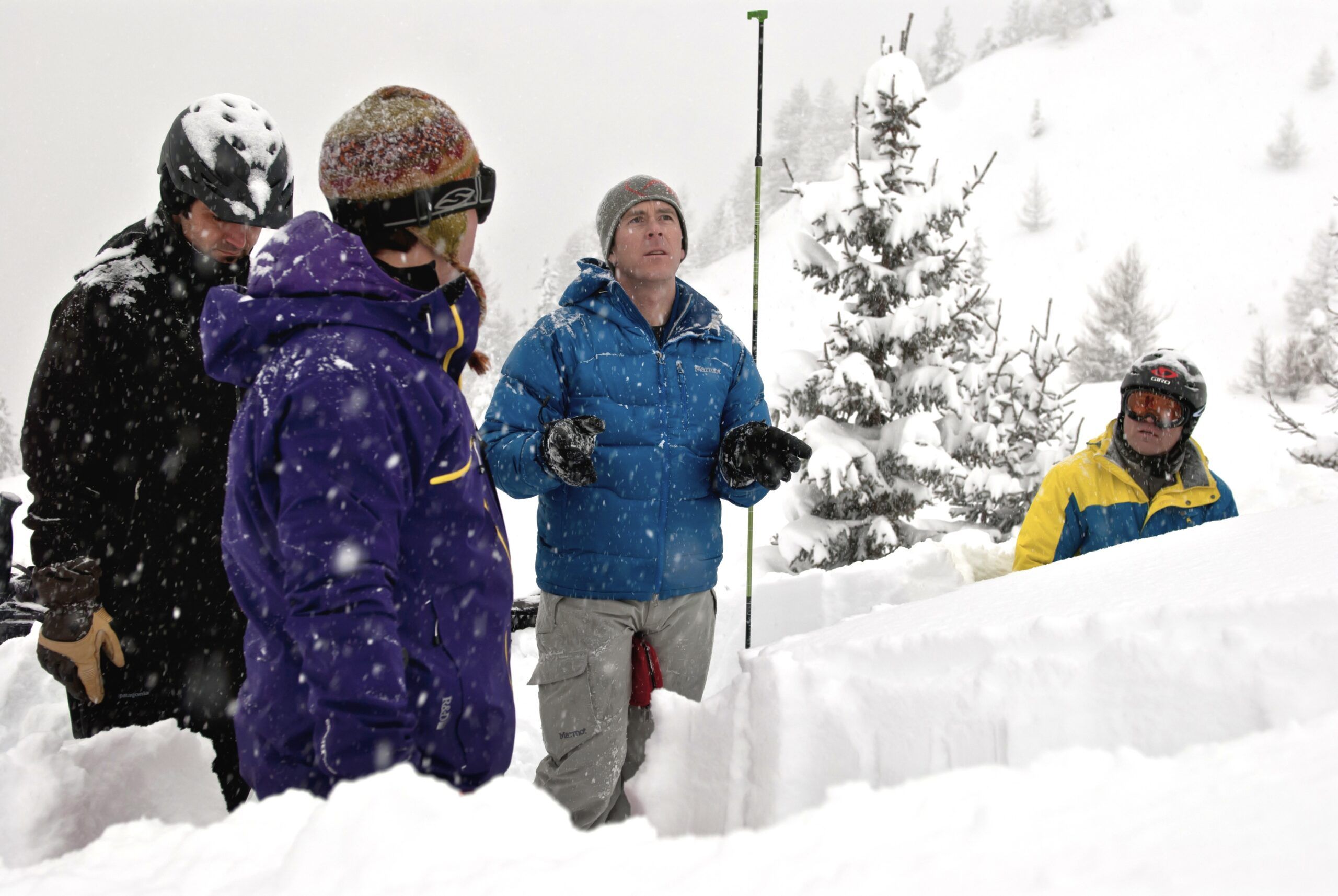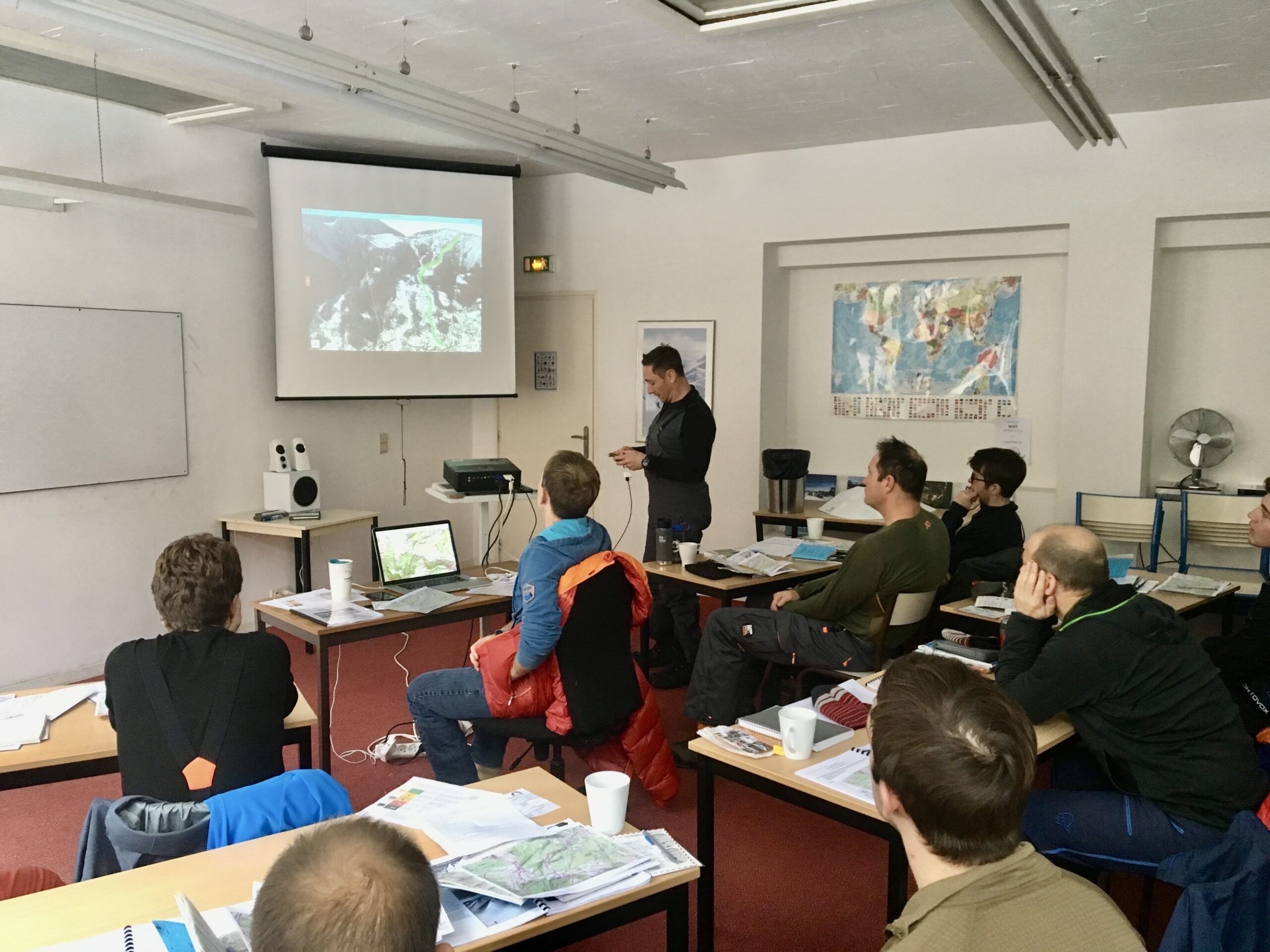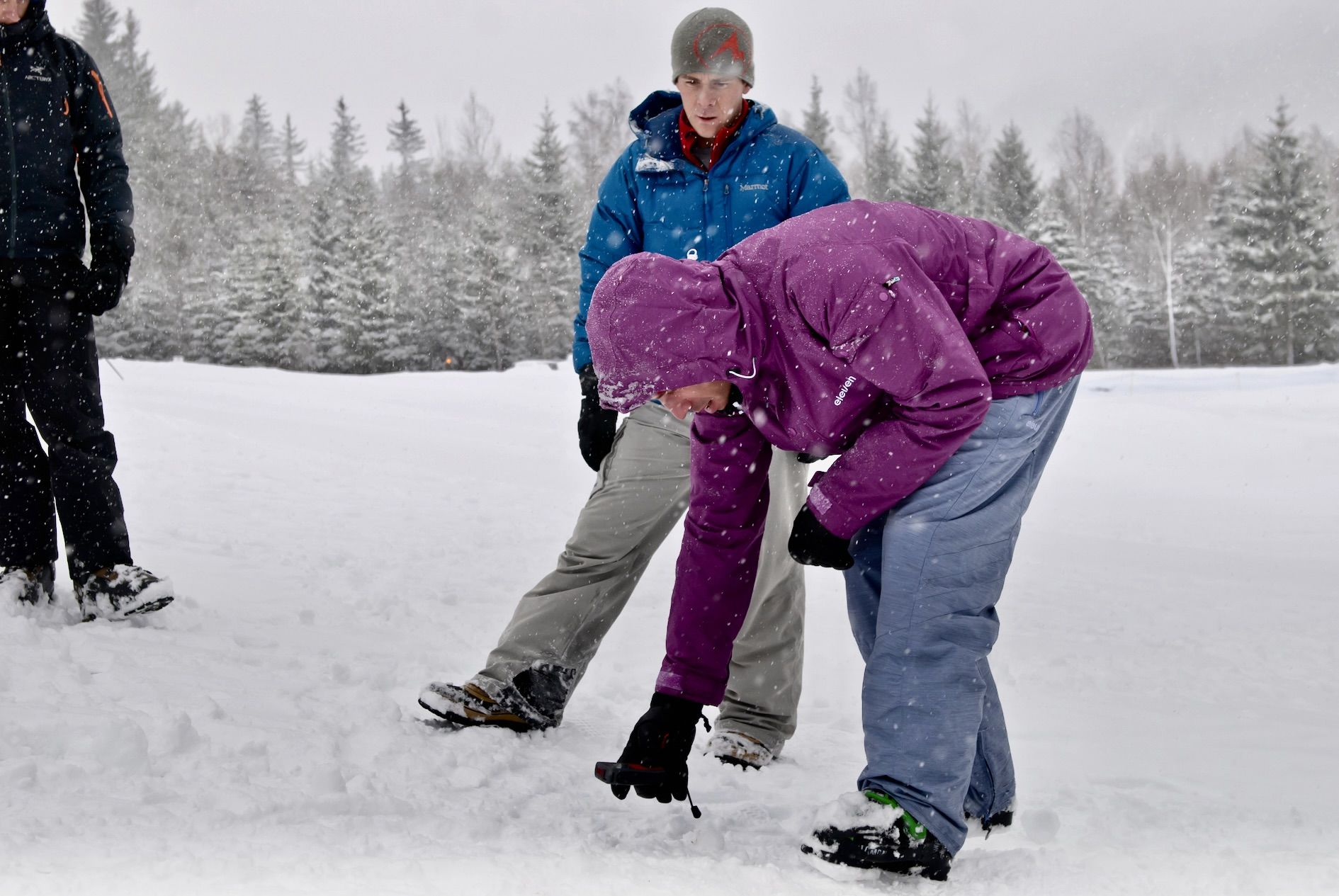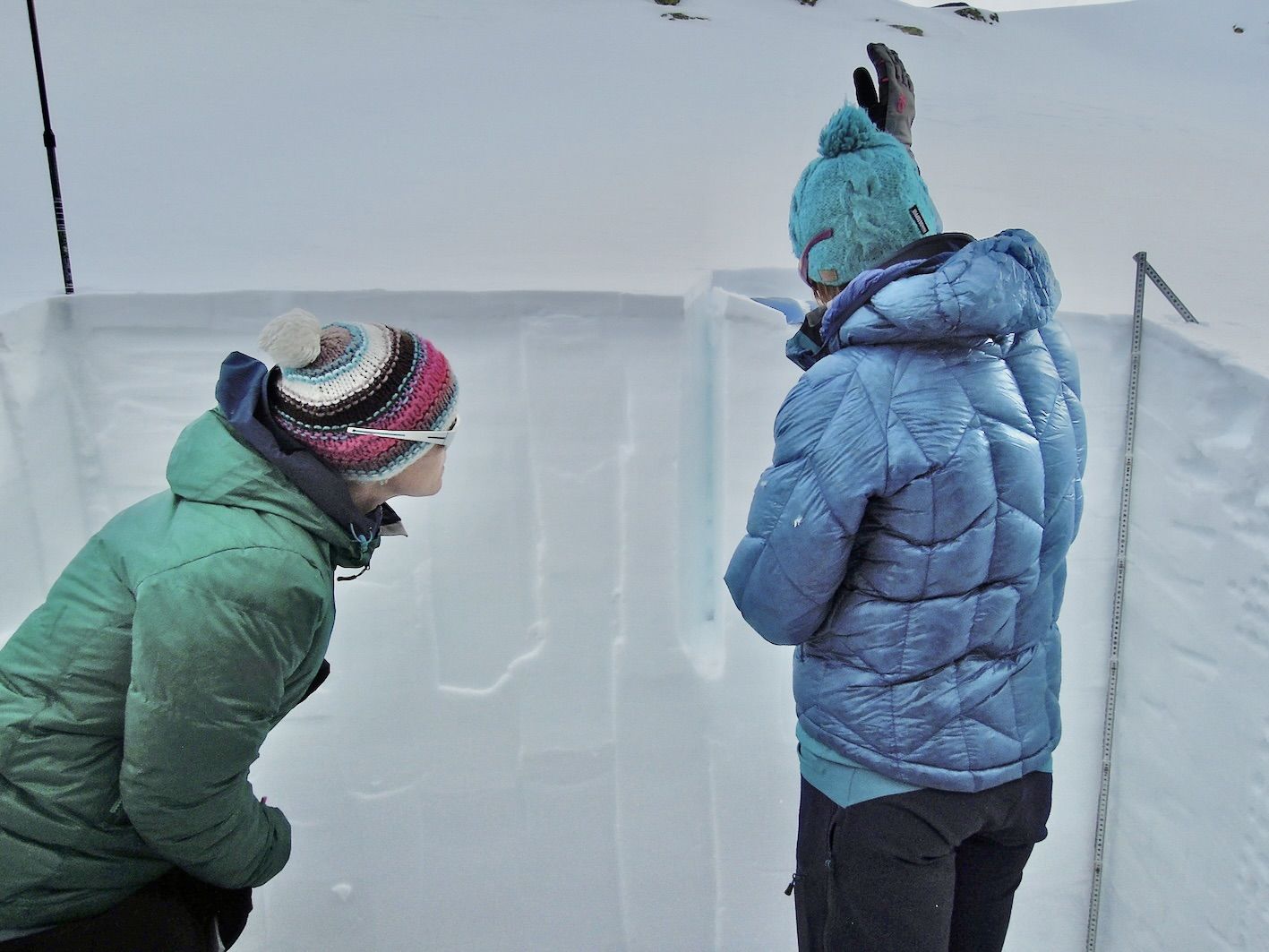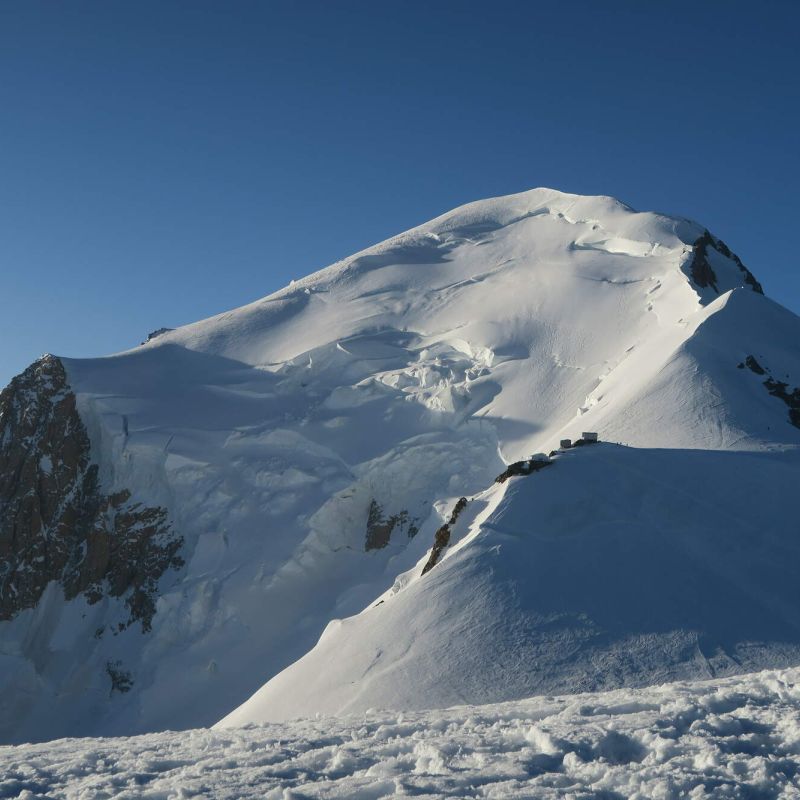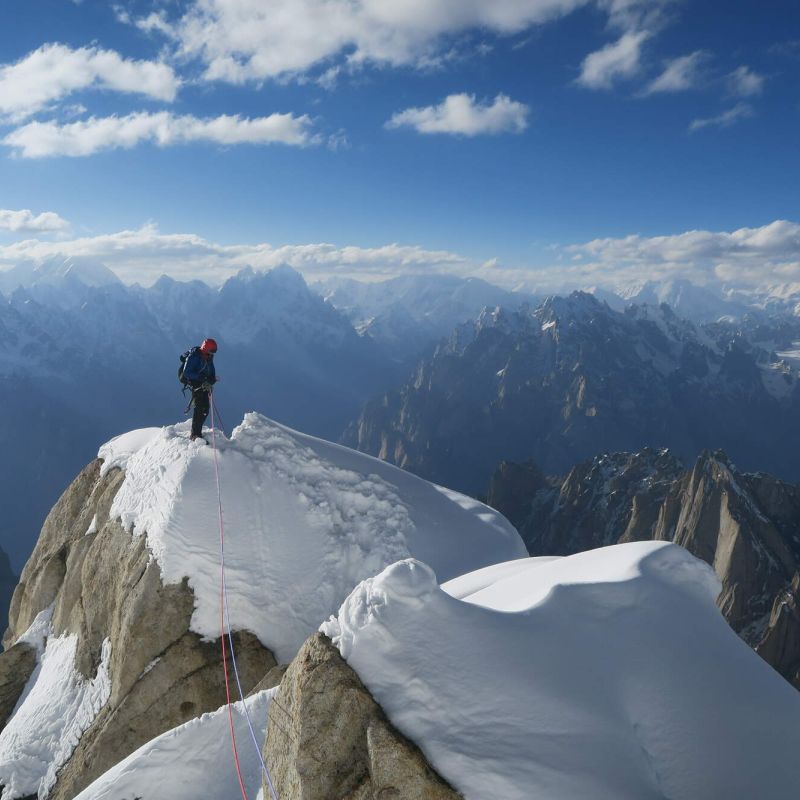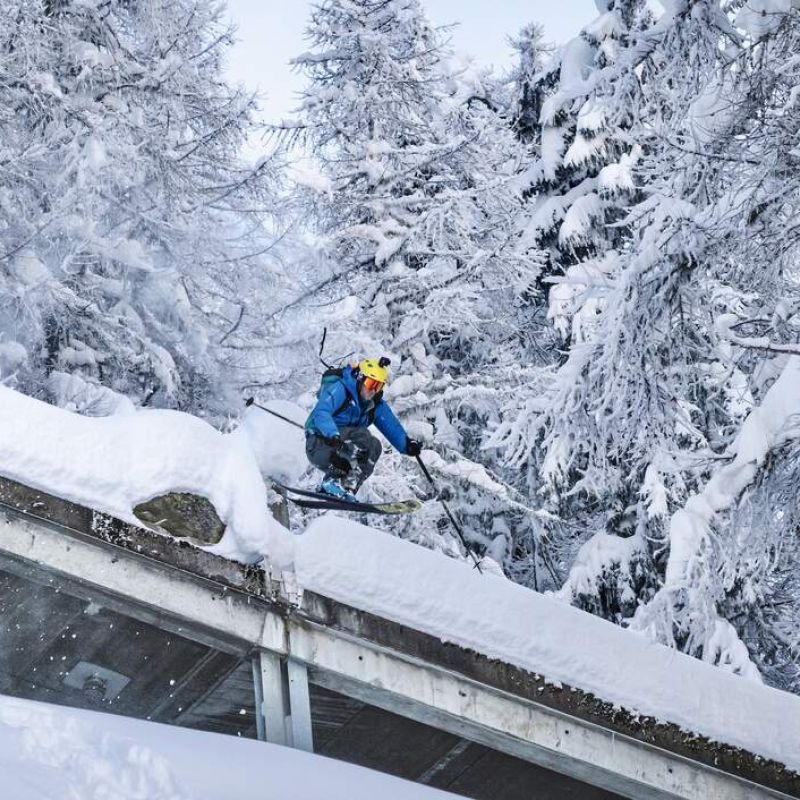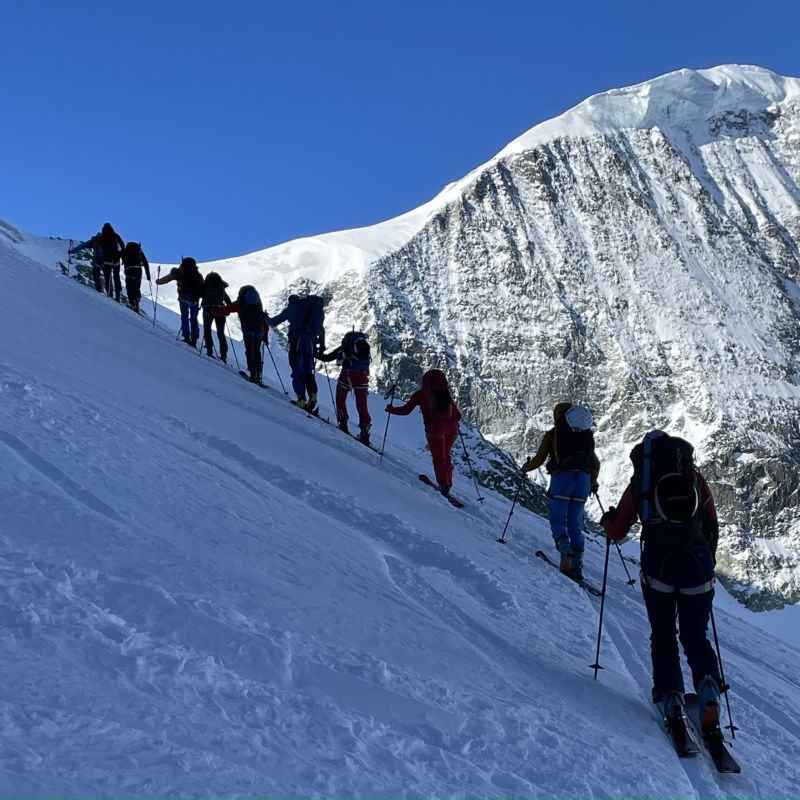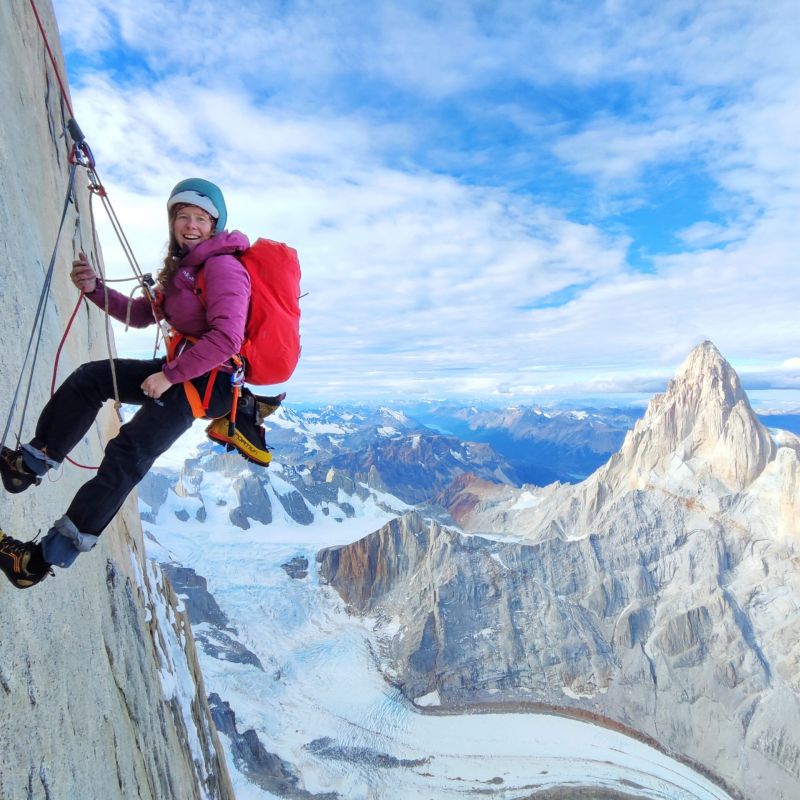The Importance of Avalanche Education
The snow is starting to cover the high peaks in Chamonix, transforming the landscape into a winter wonderland. Skiers are already touring the glaciers, making the most of the fresh powder at the Aiguille du Midi. The high peaks and glaciers are now dressed in white, signalling the arrival of the ski season. As the valley below transitions from fall to winter, thoughts turn to powder days and exhilarating descents, especially for those of us who haven’t been on skis for a few months.
For many in Chamonix, early winter means a shift in focus. Out come the skis, skins, and winter gear—ski socks, long underwear, and essential avalanche safety equipment like transceivers. With the change in season comes a new mindset: moving from summer climbing to winter sports, and from scaling cliffs to studying avalanche forecasts and preparing for safe off-piste skiing.
At Chamonix Experience (Chamex), the start of winter also marks the beginning of our avalanche safety courses. These courses are for skiers and snowboarders keen to brush up on their skills and prepare for the season ahead. We try hard to offer the best education to the off piste ski community, we continue to adapt our courses to the latest in avalanche safety.
This year, we are thrilled to partner with the American Avalanche Association (AAA) to offer a 3-day Level 1 Avalanche Awareness course. This certified course not only enhances skiers’ safety knowledge but also serves as a stepping stone for further education within the North American avalanche system. Chamonix, with its unique combination of challenging terrain and accessibility, offers the perfect setting for this in-depth learning experience.
Balancing Adventure and Safety in Avalanche Terrain
Backcountry skiing offers some of the most thrilling experiences, but it often involves skiing in avalanche-prone areas. While chasing fresh snow and exciting terrain is always tempting, safety is paramount. How do we make sound decisions when faced with the allure of a pristine powder field that might carry hidden dangers? A wrong choice can have severe consequences.
Planning a backcountry ski day is a complex task, requiring consideration of many factors: choosing the right terrain, assessing avalanche risk, checking weather conditions, and ensuring you have the proper gear.
With so many factors to evaluate, professional guidance helps skiers make informed decisions and reduce risks in the backcountry. Preparation is key—many avalanche incidents stem from poor decision-making, often influenced by impulsive choices rather than solid planning.
Building Skills and Confidence with Professional Guidance
The foundation of safe backcountry skiing starts with knowledge and preparation. Our courses help skiers develop the skills needed to interpret avalanche bulletins, recognise signs of snow instability, assess hazards, and react appropriately. We also emphasise the importance of team-building and communication, as backcountry skiing is often a group endeavour.
Throughout the course, we balance theory with hands-on practice. Classroom sessions introduce essential terminology and concepts, while field exercises provide practical experience in real-world conditions. The course begins with an introduction to the “backcountry skier’s toolbox,” covering essential equipment, snow terminology, and an overview of avalanche types and conditions.
In the afternoon, participants practice companion rescue techniques, including using transceivers to locate buried beacons. Familiarity with rescue protocols is crucial for every group member—knowing how to operate your transceiver effectively and being prepared to help in an emergency is a shared responsibility in the mountains.
Understanding Snowpack and Terrain
On the second day, we delve deeper into snowpack evolution. A basic understanding of snow science allows skiers to better assess the conditions beneath the surface. The afternoon is spent in the field, where participants dig snow pits and perform stability tests to detect hidden weaknesses in the snowpack. Knowing where and how to look for these clues is key to avoiding potential hazards.
We also introduce a planning checklist, helping skiers create and refine plans for safe routes. Terrain selection, navigation, timing, and day-end reviews are all part of the process. A well-thought-out plan, including backup options, is essential for reducing risks and maximising the chances of a safe return.
Applying New Skills on the Final Day
The third and final day of the course is all about putting new knowledge into practice. Participants spend the day skiing, following their plan, and looking for clues along the way. After a day in the backcountry, the group gathers for a debrief to reflect on the lessons learned, identify areas for improvement, and discuss how to develop further.
Our courses are led by UIAGM-certified mountain guides with AAA instructor certification, bringing a wealth of expertise to the table. These guides are skilled in making critical decisions in the mountains, and the techniques they teach are the same ones they use in their everyday work. Chamex has built a reputation for delivering high-quality introduction courses in mountaineering, skiing, and climbing. Our guides are not only experts but passionate teachers, eager to help skiers develop their skills and confidence.
A Lifelong Learning Journey in the Mountains
Even the most experienced mountaineers will tell you that learning never stops. While experience is often the best teacher, a solid foundation of knowledge is crucial for building that experience safely. The French saying, “It’s good to be lucky, but you shouldn’t count on it,” rings especially true in the backcountry. Luck may play a role, but preparation and education are the keys to success.
In Chamonix, with its challenging and often severe terrain, skiers must stay sharp and informed. There’s no one-size-fits-all solution in the mountains, and decision-making is part of the adventure. The best descents and the finest powder require not only skill but also a commitment to safety. Our AAA-certified guides are here to help you organise, prioritise, and realise great adventures.
If you’re eager to enhance your avalanche safety skills and get ready for a successful winter season, check out our course dates and join us. Let’s make the most of the season—while keeping safety at the forefront of every powder turn!
